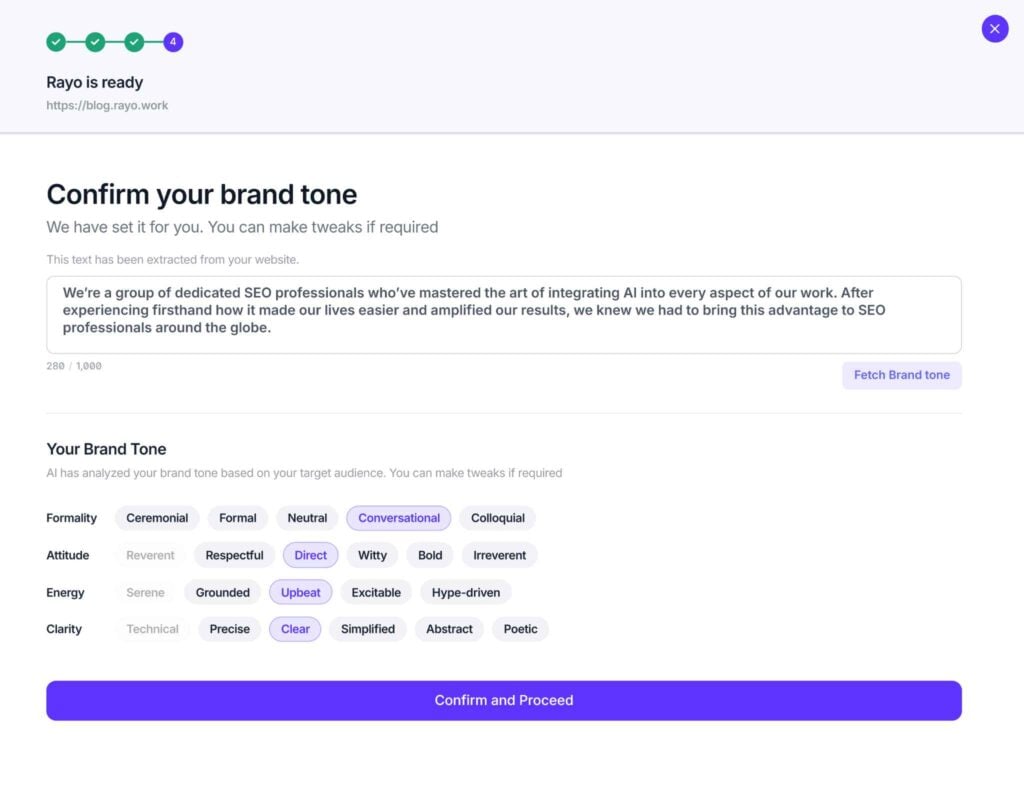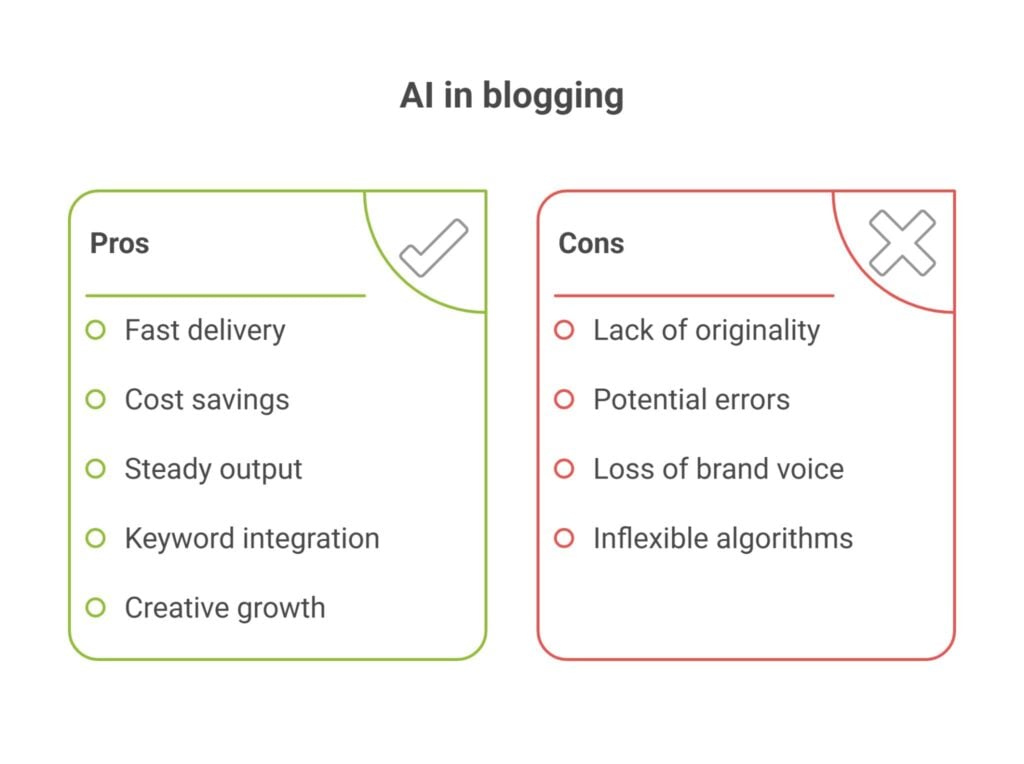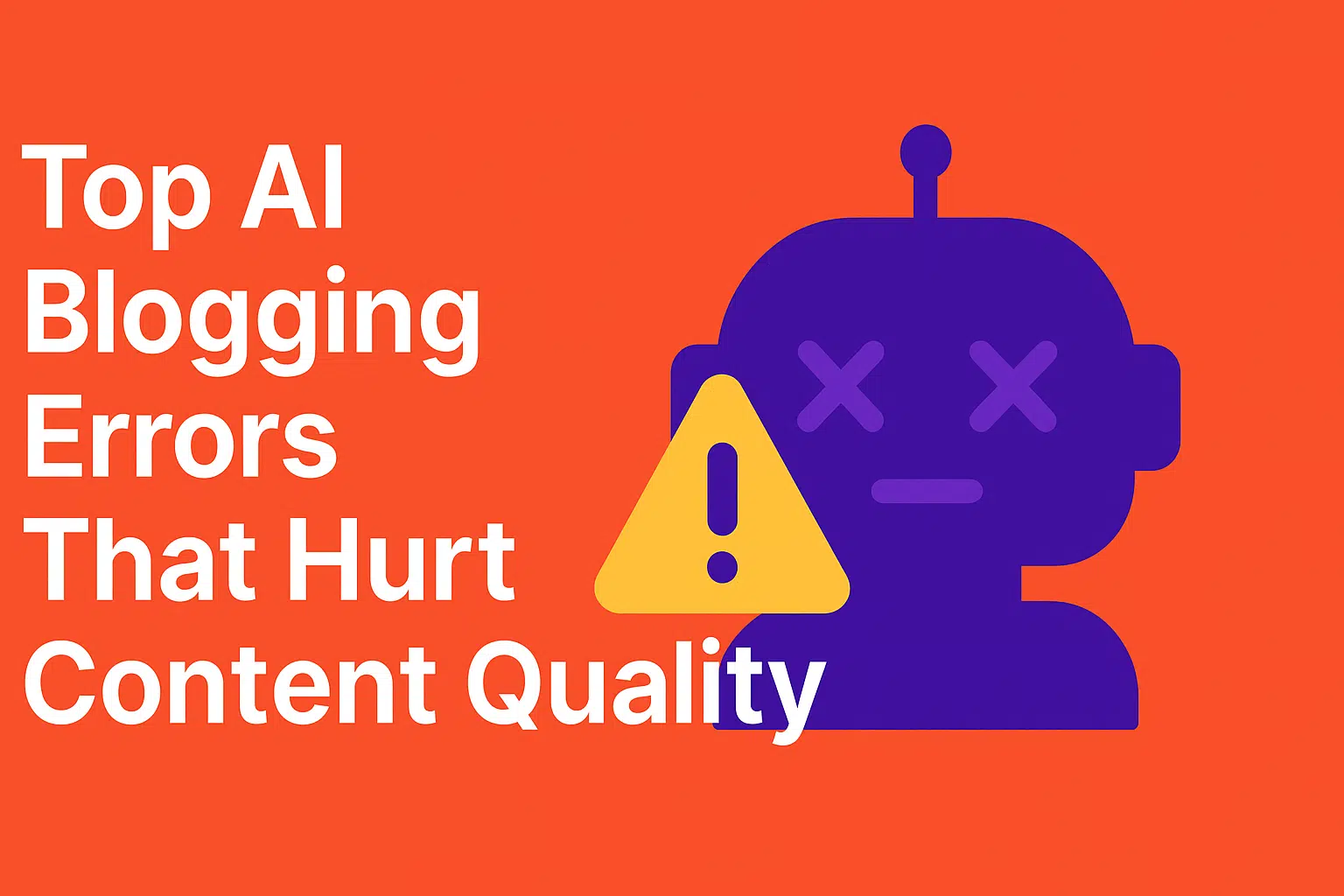Reliance on AI can in the end lead to a drop in overall quality and reduce the impact of your blog posts. When writers skip the necessary editing process, the content might include factual errors, misstate critical contexts, or even repeat generic ideas. AI tools swiftly generate text; however, they often lack the deeper nuance that human editors provide. Without a careful review, content may overlook emerging trends and audience-specific details. It is important to treat AI as merely a starting point rather than the final product, making sure every piece benefits from human insight and fact-checking to uphold content trust.
How raw AI blogging content leads to factual errors
AI-generated content appears polished on the surface but can contain several factual errors. Relying only on the raw AI output may result in data mistakes and outdated information. The tool sometimes draws from old content, which risks copying or the repetition of earlier mistakes. Also, the text can lack proper context and nuance, leading readers to misinform or even harm their understanding. In these cases, it is necessary to double‑check facts and integrate the most recent data to keep accuracy and trustworthiness in every case.
Why human editing boosts content credibility
Human editing improves blog quality by correcting errors and adding the necessary nuance that AI drafts might miss. While AI may draft the initial version quickly, human editors add context and consistency to the story. Skilled editors catch factual inaccuracies, refine the tone, and improve the overall flow of the content. When they include valuable human insight, they make sure strict following of quality guidelines, thus supporting the unique storytelling and SEO strategy. This collaborative review builds trust with both readers and search engines, making sure that every post shows the trust required and keeps an authentic brand voice.
“Artificial intelligence is not a substitute for human intelligence; it is a tool to amplify human creativity and ingenuity.”
– Fei-Fei Li, Co-Director of the Stanford Institute for Human-Centered Artificial Intelligence and IT Professor at the Graduate School of Business
Best practices for post-AI content review
After generating content with AI, it becomes necessary to do a thorough review. Best practices include proofreading for clarity, fact‑checking every statement, and adjusting the tone to suit your target audience. Editors carefully adjust the language, remove repeats, and verify numbers to meet quality benchmarks. This process not only reduces the presence of errors but also strengthens following of Google’s E‑E‑A‑T standards. By following an ordered, step‑by‑step approach, you protect against wrong info while making sure the blog remains engaging and credible. Such a careful post‑AI review finally improves accuracy, trust, and overall user engagement.
Using the Wrong Long-Form AI Content Tool
Choosing a wrong long‑form AI content tool can slow down your blogging efforts and produce results that lack depth. A tool that does not match your niche and content goals often generates outputs that are generic and shallow. The wrong choice may result in content that lacks proper structure, fails to incorporate SEO keywords well, and reduces reader engagement. It is wise to evaluate the tool’s features, integration abilities, and customization options. By carefully selecting the right tool, you make sure that your content connects with the audience while keeping clarity and quality throughout your lengthy posts, finally leading to lasting long‑term success.
Key features to check in long‑form AI content tools
Effective long‑form AI content tools must provide strong keyword integration, an efficient editing workflow, and flexible content options. Features such as strict plagiarism checks, tone adjustments, and exact SEO alignment are important. The tool should easily work with different formats and offer hands-on editing abilities. Also, it must include performance metrics and error correction functions. By evaluating pricing and user reviews, you can judge the tool’s reliability. Step by step choosing the right option improves the overall quality and depth of your blog content by giving a perfect blend of speed and precision.
Matching tools with your blog niche and goals

Matching your long‑form AI tool with your blog’s niche and particular goals is essential. An ideal tool adapts to the unique language style and subject matter of your content, offering customized templates and data‑driven information. By meeting your particular requirements and using information from user groups and forums, such as discussions on Reddit, you prevent the output from becoming generic. Using a tool that connects well with your branding makes sure that your content satisfies both SEO standards and audience needs well.
Top long‑form ai content tools compared
Several long‑form AI content tools compete in the market, each with different strengths and drawbacks. User reviews on platforms like Reddit show that tools such as ChatGPT, Jasper, and Copy.ai handle particular tasks in unique ways. While some do well in creating detailed outlines and speeding up first drafts, none can completely replace the skill of human editing for a deeper level of insight. Comparing pricing, features, and overall output quality helps you judge the most fitting option for your blog needs, making sure best match with both your plan and reader engagement goals.
Ignoring the Pros and Cons of AI for Blogging
Missing the benefits and drawbacks of AI for blogging can hurt both content quality and reader trust. AI‑generated blogs may create quick output, yet risk missing the special view that a human touch provides. While AI tools provide speed and speed up the writing process, they sometimes fail to capture the essential emotional details. Ignoring either side can create content that feels lopsided. A thoughtful approach that considers both the pros and cons makes sure that your digital content stays engaging, genuine, and believable—qualities that are critical in meeting today’s strict SEO standards and serving your audience well.

Common pros that attract bloggers to AI
AI content generation offers clear benefits such as fast delivery, cost savings, and steady output. Many bloggers value the quick pace of posting made possible by AI, which permits more active content cycles. In addition, these tools help with effective keyword integration and help optimize posts for search engines. By saving writers major time on drafting, AI well handles regular tasks and creates a strong base for creative growth, thus increasing overall productivity and allowing for a focus on strategic storytelling.
Critical cons that impact AI blogging performance
The automated nature of AI tools risks creating repeating and dull content that might lack originality. Such posts sometimes include errors or outdated facts, which can confuse readers. A dependence on AI may cause a loss of brand voice and individuality, as the content doesn’t connect strongly with audience needs. The inflexible algorithms behind these tools can make similar text without feeling or background depth. Seeing these problems is crucial to mixing quick performance with improved content quality.
How to strike a human-AI content creation balance
Finding a balance between AI output and human artistry is crucial for effective blogging. This strategy involves using AI to draft the first version while using human review to improve tone, clarity, and general accuracy. The process needs careful editing, complete fact‑checking, and improvements to increase emotional appeal in the text. By mixing the speed of AI generation with critical human input, bloggers can make engaging stories that really connect with their audience. In doing so, they make sure that digital content stays both efficient and genuinely rich in quality, meeting modern SEO standards and reader needs.
Conclusion
To wrap up, addressing common problems in AI blogging is crucial for keeping high content quality. Relying on raw AI output without proper editing might create inaccuracies and lacks the human insight needed for engaging storytelling. Selecting the right long‑form AI tool—one that matches your niche and content goals—makes sure that your posts meet modern SEO standards while keeping readers engaged. Recognizing both the pros and cons of AI allows bloggers to combine automation with human creativity effectively. Use a mixed approach that uses AI strengths without losing the authenticity and credibility only human review can give. This strategy finally builds long-term reader loyalty and support.
FAQs
What are the most common AI blogging issues to avoid?
How do the best AI content generators support SEO?
Which long‑form AI content tool works best for new bloggers?
What are the key pros and cons of AI for blogging today?
How do I improve AI blog content without rewriting everything?

Ridam Khare is an SEO strategist with 7+ years of experience specializing in AI-driven content creation. He helps businesses scale high-quality blogs that rank, engage, and convert.



